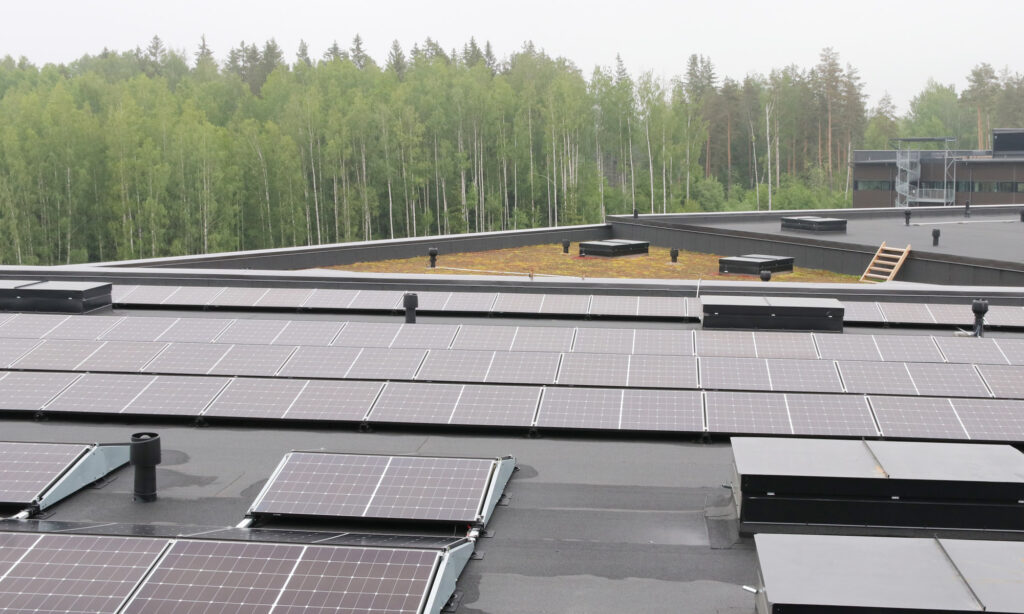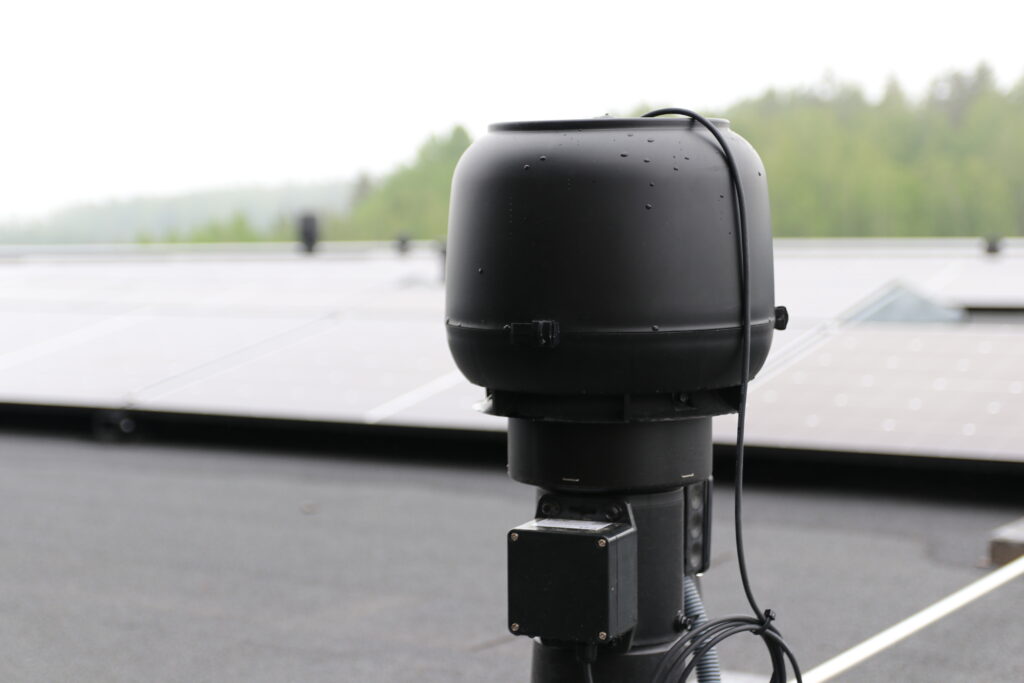Construction-Phase Moisture and the Moisture Behaviour of Structures – Research and Sensor Data Support Early, Demand-Based Ventilation of Structures

Moisture during the construction phase is one of the most difficult challenges to manage in building projects. Although it is often assumed that structures will dry out over time, research shows otherwise: moisture can remain trapped in insulation for a long period, posing risks to the condition of the structures. Today, sensor technology enables real-time monitoring of humidity levels – and with intelligent, demand-based ventilation, the drying of structures can be accelerated already during the construction phase.
The accumulation of moisture in structures during construction is a difficult problem to control despite various protective measures. Humidity can easily build up on construction sites, for example because of rain, damp building materials, or closing the structures too early.
At many construction sites, it has been common practice to simply let moisture be and rely on the assumption that it will eventually dry out on its own. However, research findings challenge this assumption. For example, Geving and Holme (2009) demonstrated that built-in moisture dries very slowly and can remain in low-slope roof structures for years. In a more recent study, Asphaug et al. (2024) monitored the humidity behaviour of roofs in two pilot projects using sensors and found that construction-phase humidity continued to affect sensor readings even 7–8 months after the buildings were completed. This shows that the issue is not temporary – the effects of humidity can persist for a long time, weakening structural integrity and shortening the building’s service life. In this article, we explore how the humidity behaviour of structures differs from traditional assumptions and why ventilation during construction is a crucial part of addressing construction-phase humidity.
The physics of structural drying
Humidity moves within structures through three main physical mechanisms: diffusion, convection, and capillary transfer. Diffusion refers to the tendency of water vapour to equalize concentration differences – moisture moves from areas with a high concentration of water vapour to areas with a lower concentration. Convection is the transport of moisture with an air current: if air is able to move within the structure, it carries moisture along with it. Capillary transfer, on the other hand, occurs when water moves in liquid form through the pores of a material, for example by being absorbed into wood or insulation.
In a non-ventilated structure (compact roof), any moisture remaining in the structure during construction cannot escape, as the structure is sealed and has nearly vapour-tight surfaces on both sides – such as the roofing membrane and the vapour barrier. In this case, the pathways for moisture removal are blocked. Diffusion hardly occurs because water vapour cannot move within the structure toward a drier area. Convection is also prevented since air cannot circulate within the structure. Capillary movement stops when moisture is unable to evaporate from the pores of the material. The moisture becomes trapped in insulation and other porous materials, where it can remain for a long time unless the conditions – such as ventilation or vapour pressure differences – change.
The moisture trapped within a structure is not stationary but reacts to changes in temperature. Daily temperature fluctuations cause the moisture to move: during the day, as the sun heats the roofing membrane, it warms up, and humidityshifts deeper into the insulation due to the temperature difference and resulting vapour pressure gradient. At night, as the structure cools, the direction of movement reverses, and some of the humiditymoves back upward. This phenomenon can be observed in sensor measurements as daily fluctuations in relative humidity (Asphaug et al., 2024), which, however, do not indicate drying but rather a temporary redistribution of humiditywithin the structure. True drying occurs only when humidityis removed from the structure – for example, through ventilation, negative pressure, or a sufficiently large vapour pressure difference.

Demand-based ventilation as a solution to construction-phase humidity
A ventilated roof offers an effective solution for removing construction-phase humidity. In their study, Geving and Holme (2010) demonstrated that even small airflows—both intentional and unintentional—can significantly accelerate the drying of structures. In their research, non-ventilated roof structures remained moist for years, whereas even limited ventilation sped up drying and reduced the risk of mould growth. The importance of ventilation was also confirmed in a study conducted by Ramboll Finland for VILPE. In that study, traditional negative-pressure ventilation dried a wet roof in three years, while demand-based ventilation controlled by a roof fan achieved the same level of drying in just 1.5 years. The key factor was that the ventilation was not continuous or dependent on natural airflow, but instead controlled according to the actual humidityconditions of the structure and the prevailing weather.
This principle is implemented in practice in the VILPE Sense Humidity Control System, where sensor data, a roof fan, and automatic ventilation control work together. The sensors measure humidity and temperature in real time, and the control system boosts ventilation only when conditions require it. This accelerates drying even more effectively than traditional negative-pressure ventilation. At the same time, the system provides documented data on the humidity behaviour of the structure, bringing transparency and reliability to the construction process.
Conclusions
Construction-phase humidity is a structural risk that does not disappear simply with time. Studies show that in sealed, non-ventilated structures, humidity can remain trapped within materials for extended periods, creating conditions conducive to microbial growth. Effective drying requires actual escape routes for humidity– in practice, ventilation that is properly designed and adjusted according to the prevailing conditions.
Measurement technology enables controlled drying. The data provided by sensors offers visibility into what is happening within the structures and makes it possible to control ventilation according to the real need.
